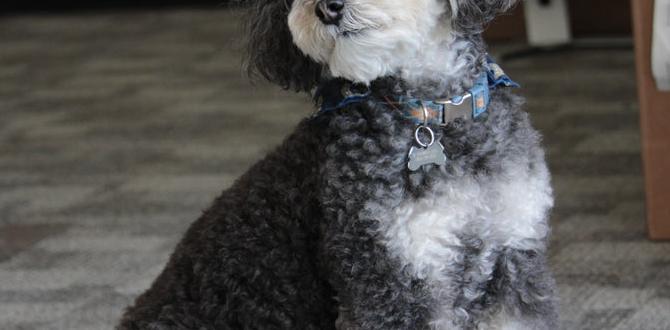Aggressive dog behavior solutions are within reach for many owners, often requiring a nuanced understanding of canine communication and a commitment to consistent, positive reinforcement. It’s a journey that, while sometimes challenging, can lead to a more harmonious relationship with your furry companion. Understanding the root cause of aggression is the first and most crucial step. This isn’t about assigning blame; it’s about observation and empathy. Is your dog displaying fear-based aggression, where their bites or snarls are a desperate attempt to create distance? Perhaps it’s resource guarding, a primal instinct to protect valuable items like food, toys, or even their favorite sleeping spot. Or could it be territorial aggression, sparked by perceived threats to their home or yard?
Understanding the Nuances of Aggressive Dog Behavior
Before diving into solutions, it’s vital to dissect what constitutes “aggressive dog behavior.” It’s not a monolithic entity. Aggression can manifest in many ways, from subtle growls and lip-lifting to full-blown lunges and bites. Recognizing the subtle cues a dog offers before escalation is paramount. These can include:
Body language: Stiffening of the body, a hard stare, raised hackles (hair on the back), an intense focus on the perceived threat, a tucked tail, or panting when not overheated.
Vocalizations: Growling, snarling, barking, or whimpering.
* Mouth behaviors: Lip licking, yawning when not tired, showing the whites of their eyes (whale eye), or baring teeth.
Misinterpreting these signals can lead to a dangerous escalation. For instance, punishing a growl, which is a warning, can inadvertently teach the dog to suppress the warning and move directly to a bite, making the situation more precarious. Therefore, the pursuit of aggressive dog behavior solutions must begin with a deep dive into understanding your dog’s unique communication style.
Effective Aggressive Dog Behavior Solutions: A Multi-faceted Approach
Once you have a better grasp of why your dog is exhibiting aggression, you can begin to implement effective aggressive dog behavior solutions. It’s important to note that severe aggression, particularly if it poses a risk to humans or other animals, should always be addressed with the guidance of a qualified professional, such as a certified applied animal behaviorist (CAAB) or a veterinary behaviorist. However, for many common forms of aggression, a combination of training, environmental management, and a shift in owner perspective can yield significant positive changes.
One of the most powerful tools in our arsenal is desensitization and counter-conditioning (DSCC). This process involves gradually exposing your dog to the trigger that elicits aggression at a distance or low intensity where they don’t react negatively. While they are in this “sub-threshold” state, you pair the trigger with something overwhelmingly positive, like high-value treats or a favorite toy. The goal is to change the dog’s emotional response from negative (fear, anxiety, defensiveness) to positive (anticipation, happiness). For example, if your dog is reactive towards other dogs on walks, you might start by rewarding them for simply seeing another dog at a distance where they remain calm. As they improve, you’ll slowly decrease the distance, always ensuring they stay below their reaction threshold.
Environmental management plays a crucial role because it prevents your dog from practicing the aggressive behavior, thus avoiding the reinforcement of that unwanted response. If your dog resource guards their food bowl, you might feed them in a separate, secure area where they feel no need to guard. If they bark aggressively at the mail carrier, you could use baby gates or physical barriers to keep them away from the front door during delivery times, and simultaneously work on DSCC with the sound of the mail carrier. This isn’t a permanent fix, but a necessary tool while you work on the underlying issues.
Positive Reinforcement: The Cornerstone of Aggressive Dog Behavior Solutions
At the heart of successful aggressive dog behavior solutions lies positive reinforcement. This means rewarding desired behaviors, making them more likely to occur in the future. Punitive methods, such as shock collars, prong collars, or harsh reprimands, can often exacerbate aggression, especially if the underlying cause is fear or anxiety. These methods can suppress the outward signs of aggression without addressing the emotional state that triggers it, leading to a dog that may become more dangerous by suppressing their warnings.
Instead, focus on rewarding calm behavior, appropriate social interactions, and alternative behaviors. For instance, if your dog typically barks and lunges when the doorbell rings, you can train an alternative behavior like going to their mat or a specific toy box. You would then reward them handsomely for performing this alternative behavior when the doorbell rings. Gradually, the presence of the doorbell becomes associated with a positive, incompatible behavior.
Furthermore, understanding and meeting your dog’s needs is fundamental. A bored or under-exercised dog is more prone to developing behavioral issues, including aggression. Ensure your dog receives adequate physical and mental stimulation daily. This could involve long walks, interactive puzzle toys, scent games, or training sessions. A tired dog is often a well-behaved dog, and fulfilling their innate needs reduces the likelihood of them developing problematic behaviors.
When to Seek Professional Help for Aggressive Dog Behavior Solutions
While many owners can effectively address mild to moderate aggression with dedication and the right techniques, there are instances where professional intervention is not just recommended, but essential. If your dog has bitten someone, shows extreme fear or reactivity, or if you feel overwhelmed or unsafe, contacting a qualified professional is the most responsible course of action. They can conduct a thorough assessment, diagnose the specific type of aggression, and develop a tailored behavior modification plan. They can also help rule out any underlying medical conditions that might be contributing to the behavior.
Remember, seeking help is a sign of strength and dedication to your dog’s well-being. Implementing aggressive dog behavior solutions is a journey that requires patience, consistency, and a deep understanding of your canine companion. By approaching the situation with knowledge, empathy, and positive methods, you can foster a secure and loving bond with your dog, transforming challenging behaviors into a testament to your commitment.
Meet Elyse Colburn, the devoted canine companion and storyteller behind the enchanting world of “Tales, Tails, and Adventures Unleashed.” A passionate dog enthusiast with a heart full of paw prints, Elyse Colburn shares heartwarming tales and insightful adventures, celebrating the joy, loyalty, and endless antics that make every dog a true hero. Join Elyse Colburn on this tail-wagging journey, where every post is a love letter to our four-legged friends.





